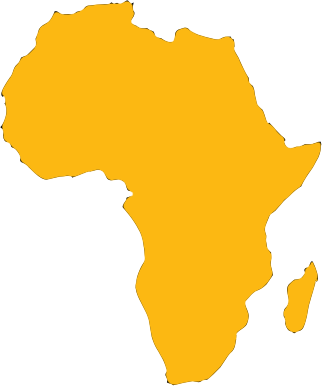'A bold new future for African Mining'
By Thabisa Hanise & Kelly-Ann Mostert
One week has passed since the 2024 Mining Indaba, themed 'Embracing the power of positive disruption'.
The Indaba celebrated its 30th anniversary this year and was filled with energy, new ideas, commitments, and an overall optimism about the potential that remains for mining on the continent.
Holding true to the theme, the agenda was filled with topics related to the role of technology and innovation to support Africa in achieving its full potential in the sector.
We spotlight three mining countries in Africa, with some showing more positive indicators than others.
For now, South Africa appears to be tilted to the side with fewer positive indicators, plagued with the presence of unmistakable barriers to growth and development in the sector.
The hurdles faced by the sector starts with the mining application backlog which, according to consulting firm AmaranthCX, is estimated to take 16 years to process if continued at the current pace, resulting in significant adverse effects on mining development spend in the country.
We see the impact of this as South Africa drops significantly in global exploration spend from close to 5% in the early 2000s to less 1% in 2023.
This decline becomes even more difficult to accept given the country's historic leadership in the sector on the continent and the abundance of minerals, including critical minerals, which could see the country benefitting from the green transition.
The Department of Mineral Resources and Energy used the Indaba as a platform to announce the launch of an exploration fund, in collaboration with the Industrial Development Corporation, to support increased exploration.
The R400 million fund is aimed at providing access to finance for South African junior miners to support prospecting work and increase access to mine ore bodies.
South Africa mining still offers significant opportunity but needs to be supported by mechanisms to ensure it remains attractive, especially amid the rise of mining in neighbouring countries.
Now, winners there are indeed, let us consider Zambia, the copper and cobalt rich region secures its position as the seventh-largest global copper producer and the second-largest cobalt producer.
Emerging as a front runner on various fronts, the country has strategically positioned mining as a key sector, with the government actively fostering growth through favorable programs and regulations, direct engagement with producers, and ambitious targets for exploration and production.
A recent discovery of a vast copper deposit in Zambia by an exploration company backed by both Bill Gates and Jeff Bezos was also announced during Indaba week, with the belief that the mine has the potential to be one of the largest high-grade large copper mines globally.
Zambian president, Hakainde Hichilema, spoke at this year's Indaba reaffirming Zambia's commitment to increasing copper production to 3 million metric tonnes per year by 2031.
In positioning minerals as an opportunity for economic development in Zambia, Jito Kayumba, senior economic adviser to the president, also spoke to the plans by the Zambian government to participate in the buying and selling of copper with legislation planned for the next three to six months.
Growing investment and production, together with government support, provides a promising platform for the Zambian mining industry to become one of the leading on the continent.
The Democratic Republic of Congo (DRC) is making its own strides in developing its mining sector despite challenges such as insecurity and illegal mining.
As one of the largest green metal-producing countries globally, DRC has a significant share of the continent's copper production.
During Indaba week, a Singapore-based company and Canda's Ivanhoe mines concluded an agreement for copper exports along a US-backed rail route, aimed at stimulating production and streamlining exports.
The DRC has its sights focused on stimulating investment, encouraging investors to collaborate on opportunities.
The Director General of DRC's Regulatory Authority for Subcontracting in the Private Sector, Miguel Kashal Katemb, emphasized this at the Indaba speaking to the openness of the country to investors and expressing a preference for partners who align in DRC's vision of sustainable economic growth and a call for modern investors, referencing Ivanhoe Mines as an example.
Aside from copper, DRC is home to many other significant "minerals of the future", an important opportunity as the world increasingly looks to Africa for the supply of lithium and other critical minerals. Overcoming the challenges to provide investors and operators with confidence will be a priority for the DRC to position itself as a leader in the sector on the continent.
The African mining landscape presents a diverse tapestry of challenges and opportunities, while countries like South Africa grapple with obstacles hindering their mining potential, others like Zambia and the DRC demonstrate resilience and progress, leveraging their resources to drive economic growth and development.
As the continent navigates these contrasts, it underscores the importance of strategic policies, investment, and collaboration to unlock Africa's mining potential and propel sustainable development forward.
Article Tags
 Africa
Africa Education
Education Joburg
Joburg South Africa
South Africa Greatest Africans
Greatest Africans Africa
Africa Education
Education Joburg
Joburg South Africa
South Africa Greatest Africans
Greatest Africans